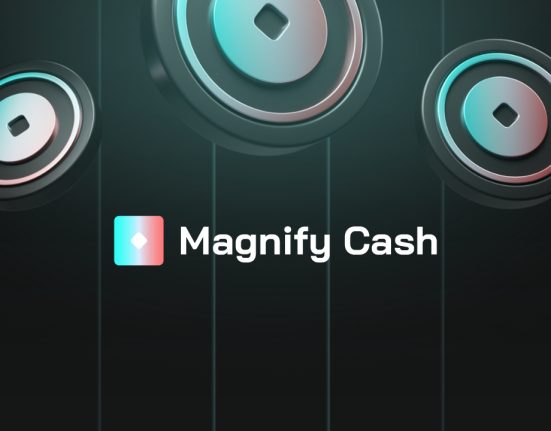“The greatest threat to our planet is the belief that someone else will save it,” said British explorer and environmentalist Robert Swan. That quote has probably never felt more pertinent. Though it’s unlikely you’ll hear it recited at your next crypto conference. However, the crypto industry is increasingly attempting to contribute. A mission is quietly underway to enable all of the benefits of blockchain without any social or environmental drawbacks.
Bitcoin and its proof-of-work model are notoriously energy-intensive. According to reports, the world’s most popular cryptocurrency consumes the same amount of energy as Pakistan, Malaysia, and Ukraine. This is an inconvenient fact for a world that has never been more concerned about climate change.
Last year, Ethereum’s transition to proof-of-stake dominated the crypto conversation (PoS). In contrast to the energy-intensive proof-of-work (PoW) consensus mechanism, validators are chosen based on their network stake, reducing energy consumption and improving computation efficiency. The main takeaway for non-crypto observers was that the world’s second-largest blockchain would use less energy.
The cryptocurrency markets in general are also contentious. Not everyone believes in the value of digital assets, which adds to the debate over their energy consumption. Those who are unfamiliar with the complexities of cryptocurrency frequently perceive it as a supercharged and cruder version of traditional finance. Not a particularly useful comparison, given that traditional finance has recently struggled to gain traction.
With DeFi, blockchain has helped to reinvent finance (decentralized finance). There is, however, a new kid on the block. ReFi (or “regenerative finance”) uses blockchain to create a more sustainable and equitable economic system. ReFi projects, in theory, prioritize environmental and social responsibility over profits. Its goal as a movement is to promote a more inclusive and just financial system.
The term is also extremely broad—perhaps too broad. It could include carbon-negative blockchains, carbon capture and storage, or simply tokenizing environmentally friendly assets. It can be whatever you want it to be because it is such a new and amorphous term.
There’s also an audience for it. There is more than enough evidence to suggest that we, as a society, are attempting to be more ethical. Consumers are increasingly making conscious decisions with sustainability and the environment in mind, according to a Deloitte 2022 consumer survey. According to a recent NielsenIQ survey, 78 percent of US consumers value a sustainable lifestyle. More than 60% of respondents in a 2020 McKinsey US consumer sentiment survey said they would pay more for sustainable packaging.
However, studies only confirm what most people already know. The general public has never been more concerned about the social and environmental consequences of their actions. (At least in theory.)
However, this shift in habits over the last decade or so presents an opportunity for a company with a savvy marketing department. “A ReFi label should not be enough to satisfy an ethical investment,” Marius Grigoras, CEO of BHERO, told BeInCrypto. “While we believe the ReFi movement is a positive force for change, we understand that some projects may use the ReFi label to appear more ethical than they are.” In contrast to other investments, where a gut feeling can suffice, investors must be extremely thorough when vetting [these] investments.”
The regenerative finance movement is thought to have started in the aftermath of the 2008 financial crisis. Although the term does not appear frequently in the digital record until the mid-2010s. However, its abbreviation (ReFi) alludes to its roots in DeFi (decentralized finance), which only became popular in 2020. Since then, cryptocurrency has gained traction in the wider world. It is not always a positive one.
“ReFi can help to shake off some of the negative reputations that crypto has accumulated over the years, and we can start to see real-life examples of how powerful crypto can be,” Grigoras continued. “Because crypto values are largely determined by reputation and demand, this is fantastic news for the industry!” Furthermore, by giving investors access to a broader range of projects, ReFi can help to build trust in the cryptocurrency space and attract more mainstream investors.”
When asked about the challenges facing the ReFi sector, Masa Finance co-founder Calanthia Mei has a simple answer: awareness and education. “Many investors are still unfamiliar with cryptocurrency and the principles underlying the ReFi movement,” Mei explained. “In addition, there is a lack of clarity around regulatory frameworks for ReFi projects, which has caused some investors to be wary.”
Many argue that the so-called “ReFi” movement has been present in blockchain and cryptocurrency since its inception. After all, the unbanked and those living in volatile economies are among the biggest beneficiaries of cryptocurrencies. What counts as ReFi if that doesn’t?
“Awareness generates users, traffic, and funding for ReFi projects,” Mei added. “In a crypto bear market, some ReFi projects are struggling for funding.” [This] may also slow the necessary innovation in getting these technologies into the hands of those who need them the most.”
“Unfortunately, the crypto persona has become a caricature, but it does not accurately represent the dynamic set of builders and projects working in the web3 community.”














